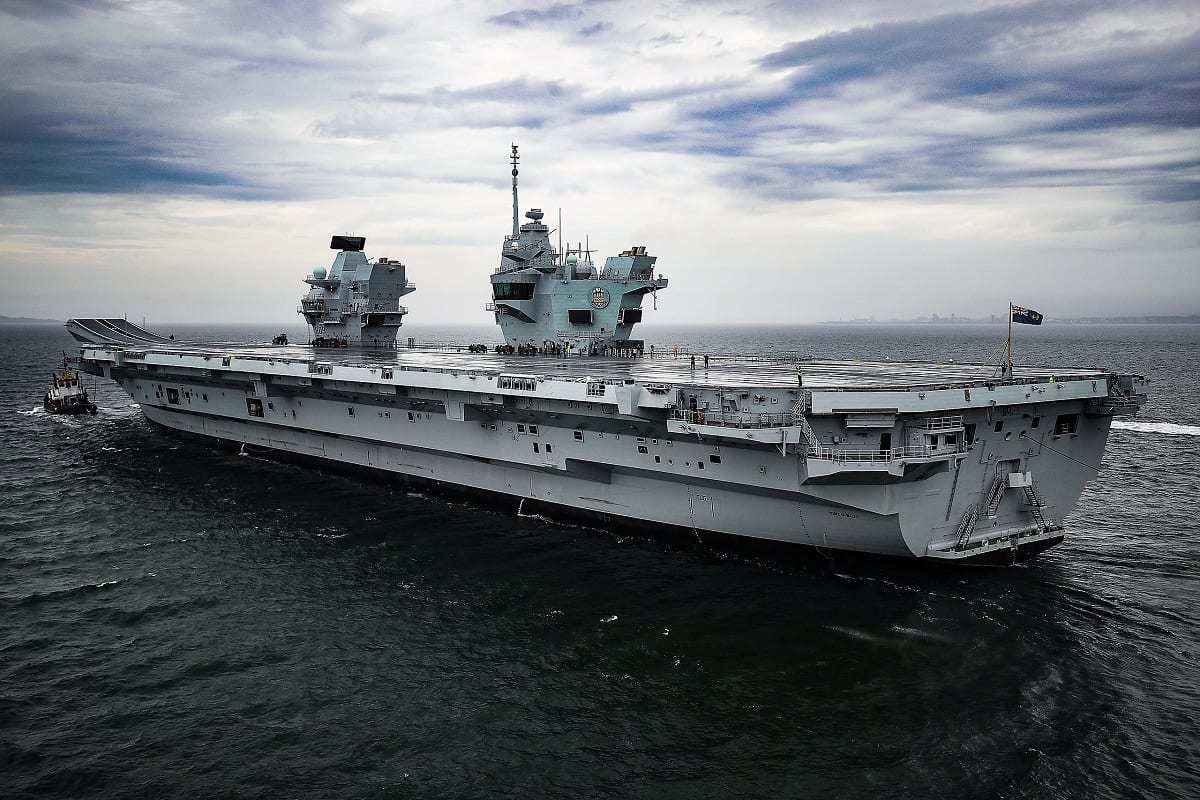The HMS Prince of Wales (R09) is one of the most advanced and formidable warships in the British Royal Navy’s fleet. As the second of the Queen Elizabeth-class aircraft carriers, it represents a significant leap in naval capabilities for the United Kingdom.
However, despite its impressive specifications and potential, the HMS Prince of Wales has faced several challenges since its commissioning.
This article delves into the history, capabilities, issues, and future prospects of this modern marvel.
The Backbone of the British Navy
The HMS Prince of Wales was ordered in 2008 and built by the Aircraft Carrier Alliance, a consortium of BAE Systems, Thales Group, and Babcock International. The ship was launched on December 21, 2017, and commissioned into the Royal Navy on December 10, 20191.
Named after the Prince of Wales, the carrier is designed to operate with a variety of aircraft, including the F-35B Lightning II stealth multirole fighters and Merlin helicopters.
With a displacement of approximately 65,000 tons and a length of 284 meters, the HMS Prince of Wales is one of the largest warships ever built for the Royal Navy. Its flight deck spans 70 meters in width and 280 meters in length, providing ample space for aircraft operations.
The carrier can accommodate up to 36 F-35B aircraft and four Merlin helicopters, with a surge capacity of over 70 aircraft. The ship’s propulsion system allows it to reach speeds of up to 25 knots, with a range of 10,000 nautical miles.
The HMS Prince of Wales is equipped with advanced radar and sensor systems, including the S1850M long-range radar and the Type 997 Artisan 3D medium-range radar1. Its defensive armament includes Phalanx CIWS (Close-In Weapon System) and 30mm DS30M Mk2 guns. The carrier’s design emphasizes flexibility, with accommodation for 250 Royal Marines and the ability to support them with attack helicopters and troop transports.
Issues and Challenges for HMS Prince of Wales
Despite its impressive capabilities, the HMS Prince of Wales has faced several significant issues since its commissioning. One of the most notable problems occurred in August 2022, when the ship suffered a starboard shaft coupling failure shortly after leaving Portsmouth for trials in the United States.
The investigation revealed that the starboard shaft was misaligned from the build stage, and the incorrect installation of key components led to the defect. This issue required extensive repairs and caused delays in the ship’s operational schedule.
In addition to the starboard shaft problem, a similar issue was discovered with the port shaft, further complicating the repair process. These mechanical failures have raised concerns about the overall reliability of the ship’s propulsion system. The Royal Navy has undertaken significant efforts to rectify these issues, but the problems have highlighted potential vulnerabilities in the ship’s design and construction.
The HMS Prince of Wales has also faced other challenges, including leaks and mechanical failures. In 2020, the ship experienced two serious leaks, which required repairs and further delayed its operational readiness. These issues have contributed to a perception that the ship has struggled to achieve its full potential since its commissioning.
Future Prospects: Will the British Sell the Carrier?
The future of the HMS Prince of Wales has been a topic of considerable debate within the Royal Navy and the broader defense community. Given the significant investment in the ship, estimated at £3.5 billion, there is a strong desire to ensure that it remains a valuable asset for the Royal Navy. However, financial constraints and ongoing maintenance challenges have led to discussions about the possibility of selling the carrier.
Reports from a year ago suggested that the Royal Navy might be forced to sell the HMS Prince of Wales to address budgetary pressures. The idea of selling the carrier has been discussed within the Maritime Enterprise Planning Group, which considers future strategies and operational commitments.
Potential buyers could include allied nations such as the United States or Australia, which could benefit from the advanced capabilities of the Queen Elizabeth-class carrier. However, a Royal Navy spokesperson silenced the rumors in 2024, stating that the Navy has no intention od selling the carrier.
HMS Prince of Wales: An Aircraft Carrier Worth Saving?
Despite these discussions, there are compelling arguments for retaining the HMS Prince of Wales within the Royal Navy. The carrier still provides a critical capability for power projection, humanitarian assistance, and joint operations with allied forces. The ability to operate F-35B aircraft and support a wide range of missions makes the ship a valuable asset for the UK’s defense strategy.
Moreover, the geopolitical landscape, particularly the growing threat from Russia and the increasing reliance on maritime power by NATO, underscores the importance of maintaining a robust carrier capability. Selling the HMS Prince of Wales could undermine the UK’s ability to respond to emerging threats and fulfill its commitments to international security.
The HMS Prince of Wales was supposed to be a significant achievement in naval engineering and a critical component of the Royal Navy’s capabilities. While the ship has faced notable challenges, including mechanical failures and budgetary pressures, its future remains a subject of strategic importance.
As of writing this, it seems that the Royal Navy has decided to keep the aircraft carrier and shoulder the economic burden with a stiff upper lip.
For now, the HMS Prince of Wales continues to serve as a symbol of the Royal Navy’s enduring strength and adaptability in an ever-changing world.
About the Author: Isaac Seitz
Isaac Seitz, a 19FortyFive Defense Columnist, graduated from Patrick Henry College’s Strategic Intelligence and National Security program. He has also studied Russian at Middlebury Language Schools and has worked as an intelligence Analyst in the private sector.

